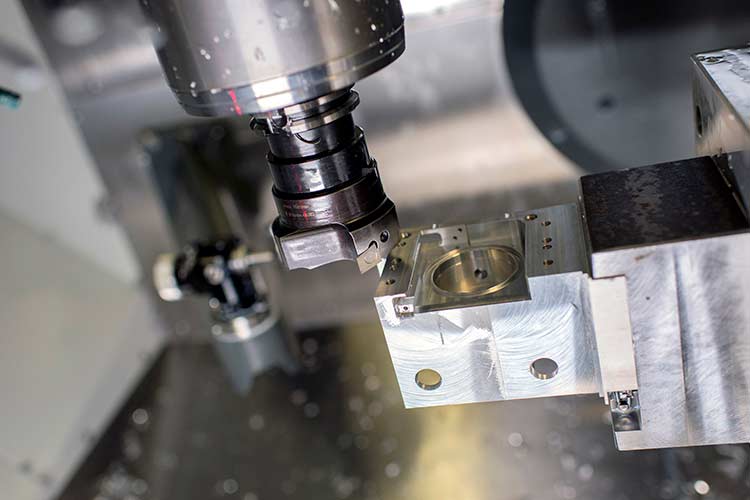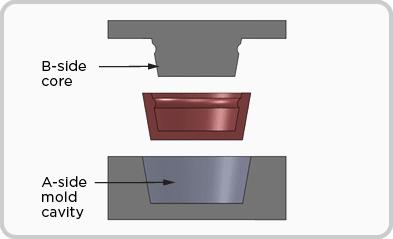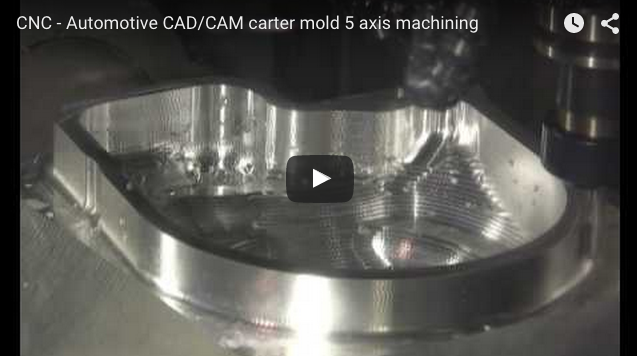I often find myself tongue-tied when trying to explain exactly what I do for a living. My response ends up being overly simplistic. Something to the effect of: “I make stuff out of metal…” While this is true, it does not do proper justice to what is one of the most interesting sub-sectors in manufacturing.
What Is Machining?
Machining is an art of subtractive manufacturing. Shapes are created by removing material from a workpiece using cutting tools on an industrial machine like a mill or a lathe. Tooling made from carbide – a durable carbon based metal – are used to cut materials like steel and aluminum by forming a chip at the cutting edge. The chip is formed and removed by a sheering action between the leading cutting edge and the workpiece. Chip formation varies between materials and cutting tools. Materials such as aluminum alloys are very machinable due to the softness of the material and the low cutting forces required. Other materials, such as stainless steel, nickel alloys, and titanium present a more difficult challenge due to their toughness and hardness.
A component that requires machining usually has an engineering drawing that contains dimensions and accuracy tolerances providing detail of the part requirements.
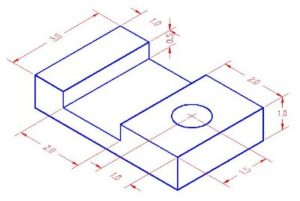 For every feature of the component, a nominal/perfect dimension is provided along with a tolerance, an allowable deviation from the perfect dimension. Tolerances can range from plus or minus forty-thousands of an inch (.040″), and all the way down to something as small as +/- one ten-thousandth of an inch (.0001″). This means that if a hole has a dimension 1.000″ with a tolerance of +\-.010″, the hole is allowed to be 0.990″-1.010″. As a point of reference a human hair is roughly three thousands of an inch (.003″)!
For every feature of the component, a nominal/perfect dimension is provided along with a tolerance, an allowable deviation from the perfect dimension. Tolerances can range from plus or minus forty-thousands of an inch (.040″), and all the way down to something as small as +/- one ten-thousandth of an inch (.0001″). This means that if a hole has a dimension 1.000″ with a tolerance of +\-.010″, the hole is allowed to be 0.990″-1.010″. As a point of reference a human hair is roughly three thousands of an inch (.003″)!
Tolerances have a dramatic effect on tooling selection and machining strategy. If a hole has a tolerance of +/- .010″ , a standard drill will do the job. If a hole has a tolerance of +/- .0001″, a reamer (left) or boring head (right) is typically used in order to achieve such a tight tolerance.
You may be wondering how it’s even possible to measure something that is so small. Common household measuring tools such as rulers and tape measures are used for measuring things in feet and inches. In order to measure something accurate to one ten-thousandth of an inch, a highly precise measuring instrument is required. Vernier calipers (left) are one of the most common instruments used in manufacturing due to its ease of use and flexibility to measure many different types of dimensions like length, width, and height. An even more accurate instrument is the micrometer (right). It is used for measuring dimensions with ten times more accuracy than a vernier caliper and is used where extreme precision is absolutely critical to the function of the machined part. These instruments use a blend of mechanical and electrical components to measure with such accuracy.
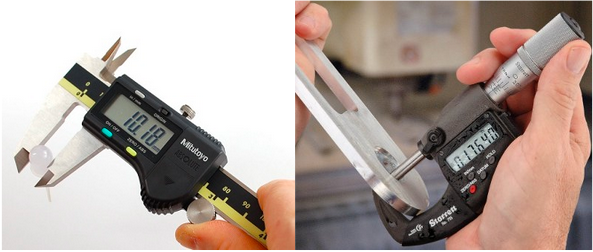
The World Around Us
If you own an iPhone, take it out of your pocket and look at it closely. Most iPhone housings and antennae are machined from aluminum or steel. Next time you get a coffee at Starbucks take a look at the plastic lid or the green plugs for minimizing spills. Look at your car. It is comprised of hundreds of machined parts like brake rotors, engine blocks, steering knuckles, tie rods, motor mounts, and more. How about a more abstract example? The vast majority of parts that are made from plastic are made by injection molding. Injection molding is a process whereby molten plastic is injected into a mold and then cooled to form the final product. These molds are made from precision machined cores and cavities.
When you look at a plastic part (TV remote, light switch, toys), just think about what the molds for those parts may look like. These are common examples of consumer products that most people can identify with. However, the world of machining goes even deeper into industries such as power generation, aerospace, automotive, and consumer electronics just to name a few. The point is this: you are surrounded by everyday products that have come to life through the process of machining.
Now That’s Cool
I still remember the moment when I got hooked on machining. I was in high school shop class and my teacher Mr. Terranova demonstrated how to use a milling machine by drilling a hole in a piece of steel.
Wait, what? You can drill steel?!
At the time, I was discovering the world of wood working, so the idea of cutting steel just like wood was a concept that was beyond my understanding. In the months to come, I learned how to make a steel hammer, a steel nut cracker, and an aluminum three piece pen on a mill, lathe, drill press, and lots of hand filing (I mean a lot). I can’t tell you how satisfying it is to hammer in a nail with a tool you machined from scratch.
Since then, I have had the fortunate opportunity to make lots of really cool stuff like impellers, turbines, fans, satellite dishes, phone enclosures, drive shafts, and a ton of prototype projects for Tesla Motors (**cough** Dual Motor, Falcon Wing Doors **cough**). If I told you any more… Well, you know…
Now that’s cool, or at least my inner nerd thinks so.
A World of Infinite Possiblities
Machining is like solving a giant problem. Approaching a new project can be decomposed into several high level categories such as: what cutting tools to select, how to appropriately use them, how to hold the work piece material, special material considerations, what machine to use, and exactly what steps need to be taken to accurately machine the part. One simple mistake within any of these categories can result in a bad part, or at worst, catastrophic damage to a machine or injury. Foresight and error checking are critical to machining in a safe and effective manner.
A simple part can be machined a million different ways depending on the machinist and their preferences. I frequently work on projects with co-workers where we are making similar parts of an assembly, and although we choose entirely different methods, the end result is so similar you can barely tell who made what.
Without getting too philosophical, it is somewhat of a journey where the beginning and end have clear definitions, but what happens in between is a form of art. In the world of prototyping, you usually have an insanely tight deadline to hit, which really tests your decision making ability to the fullest. This broad scope of creativity and responsibility is extremely exciting and can be an excellent incubator for innovation.
So Why Should I Care?
Machining is part of our everyday lives and has been for generations. From plastic toys and classic cars that our parents grew up with, to modern technologies like robots, smart phones, and electric cars, none of which would be possible without machining. Look at the world a little differently and appreciate the ways that machining has improved your everyday life.
I think it is important to show interest and understand the career fields of your friends, colleagues, and peers around you. Each person you know is an opportunity to learn something new. In fact, I think everyone should write a post called, “My Field is Awesome and Why You Should Care”. Since machining is my medium, I hope to have provided a glimpse into what I do and highlight some of the things that get me excited about it.
If you aren’t convinced, have a look on YouTube for more machining videos of some truly amazing parts.
You can also check out some of my videos here.
Here are some of my favorite machining videos on YouTube:
Author:
Spencer Burns, Sr. R&D CNC Programmer at Tesla Motors
The article first published on CNCjobs.net
Lead image courtesy: Haas Automation, Inc

